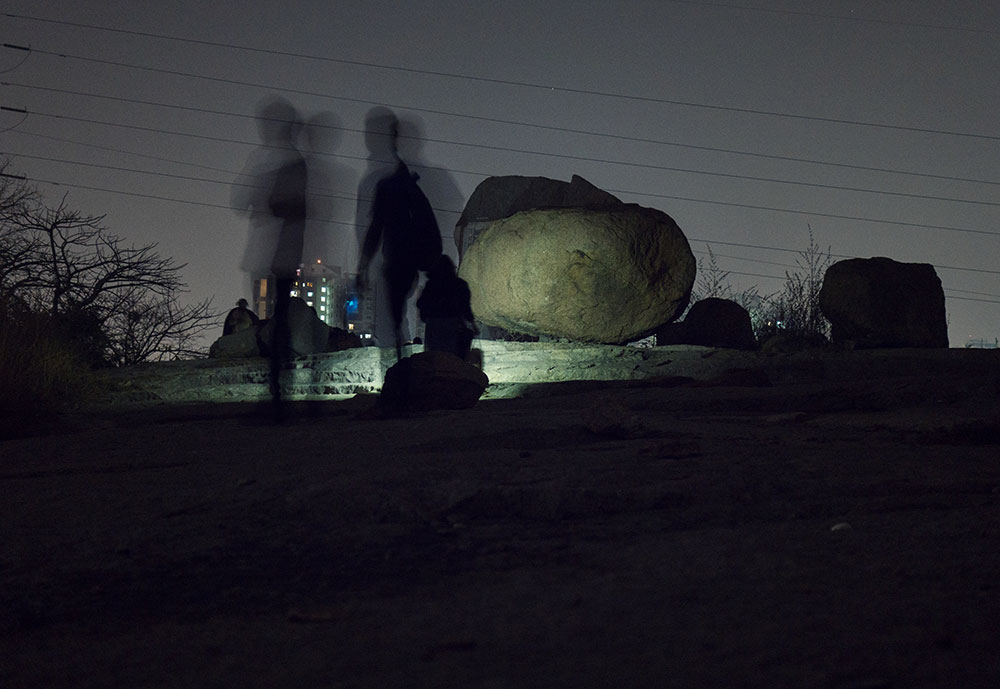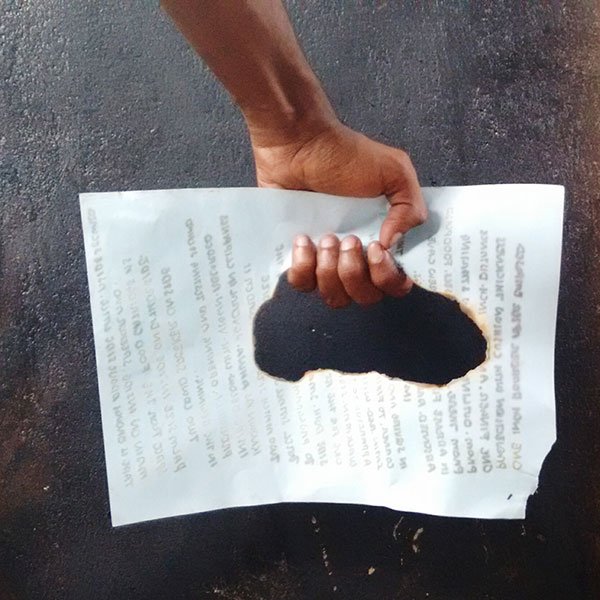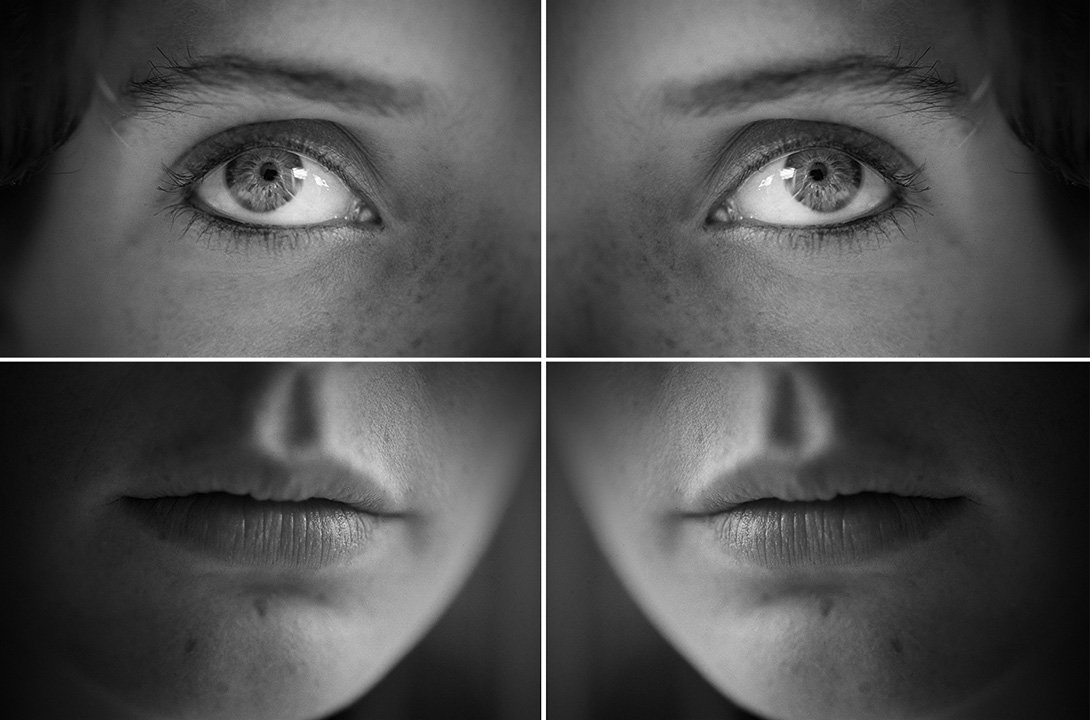Panorama
Photography and Beyond
Photo Mail presents
A panoramic view of
The art of photography’s
Interaction and
Interrelation with other
Art mediums such as literature
Architecture, and
Other visual media
Joyel K Pious
Reviews Entropy
A multi-disciplinary
Performance
Directed by Firos Khan
Performed on
29 and 30, October, 2022
Organised by
Forplay Society, Mattanchery
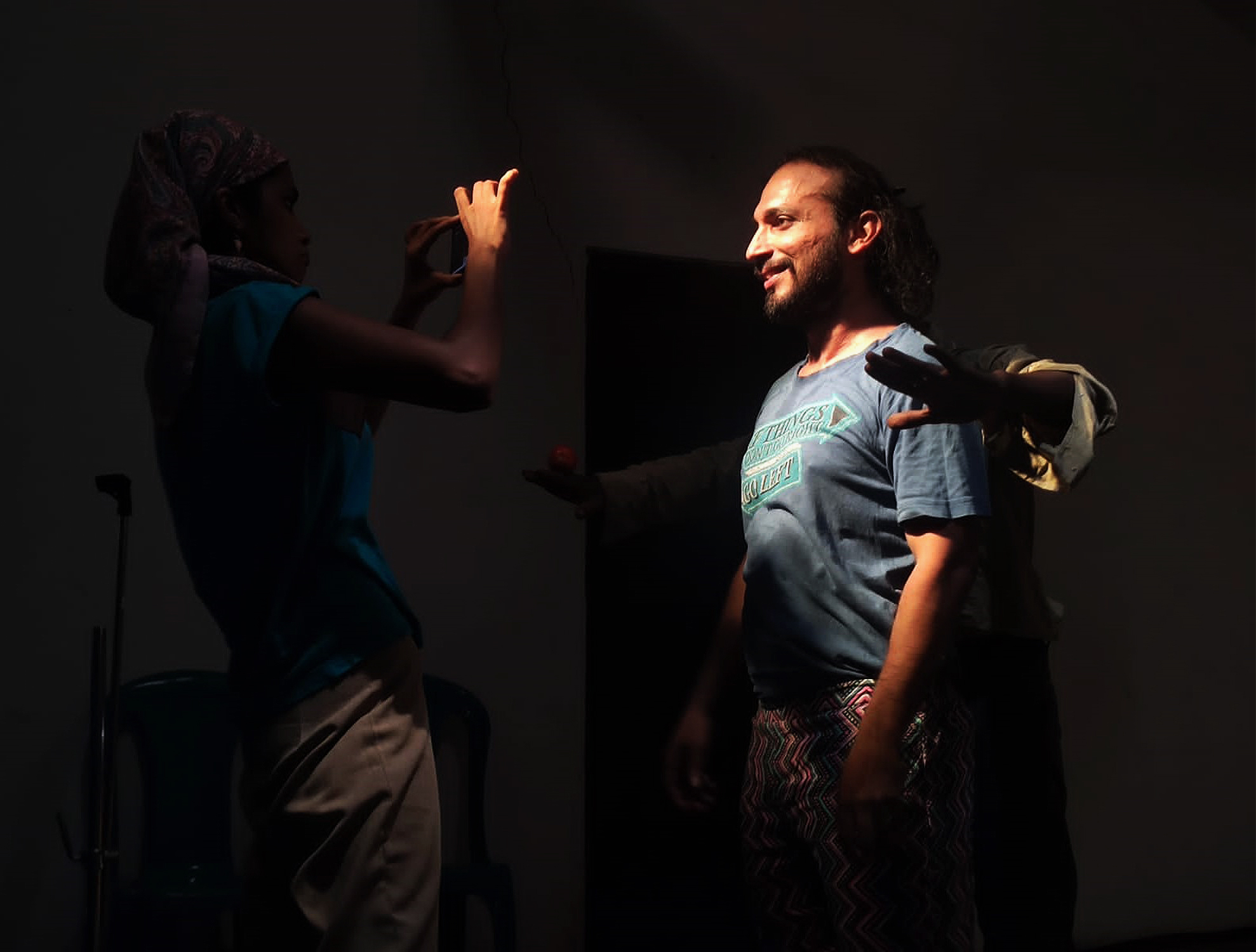
© Merkaba
A stage was set aeons ago when order collapsed in the bang of a moment. As time ticked away, the stage saw countless performers appearing and disappearing in their minuscule, yet profound, attires. Evolutions and revolutions shared this grandstand at the same time, often not recognising each other. The broken order gave rise to everything that we now know. One became two, two became four, and so on. Multitudes now, chaos everywhere. On one corner of this infinitesimally gigantic stage, a performance of sorts has been going on. Chaos rules the roost in this tiny pale-blue spot. The all-pervading mayhem has been manifesting itself in different forms. It plays out war and peace in the unknown corners of our minds. It can be heard in the deafening battle cries and the gloomy silence of recessions. Chaos makes apocalyptic visits in the form of pandemics and meteor strikes. It showers abuse and violence on ethnic, political, religious and sexual minorities. Even while staying far away from these scenes, we feel heaviness, pain and an unsatiable rage towards the perpetrators.
Entropy, a transdisciplinary performance directed by Firos Khan, is set on a stage where perpetrators, camera and witnesses partake in the feast of mob violence. Carrying the signature of post-dramatic theatre, Entropy unravels itself not on the stage. For me, it all begins inside our home. For you, it can be traced to some shady corners of our minds. We – both you and I – may agree that the monster has been sleeping since time immemorial. Once awakened, it refuses to return to bed. The monster reminds me of a coin or a pair of inseparable twins. Like a cat trying to get hold of its tail, it is busy playing a game, rather a nasty one. Soon, you and I will forget our common beginnings. When I hear music, you will hear only noise. When you chant politics, I will boil with hatred. Ever entangled, yet trying to break free from each other, we are delving deep into the realms of politics, religion and violence.
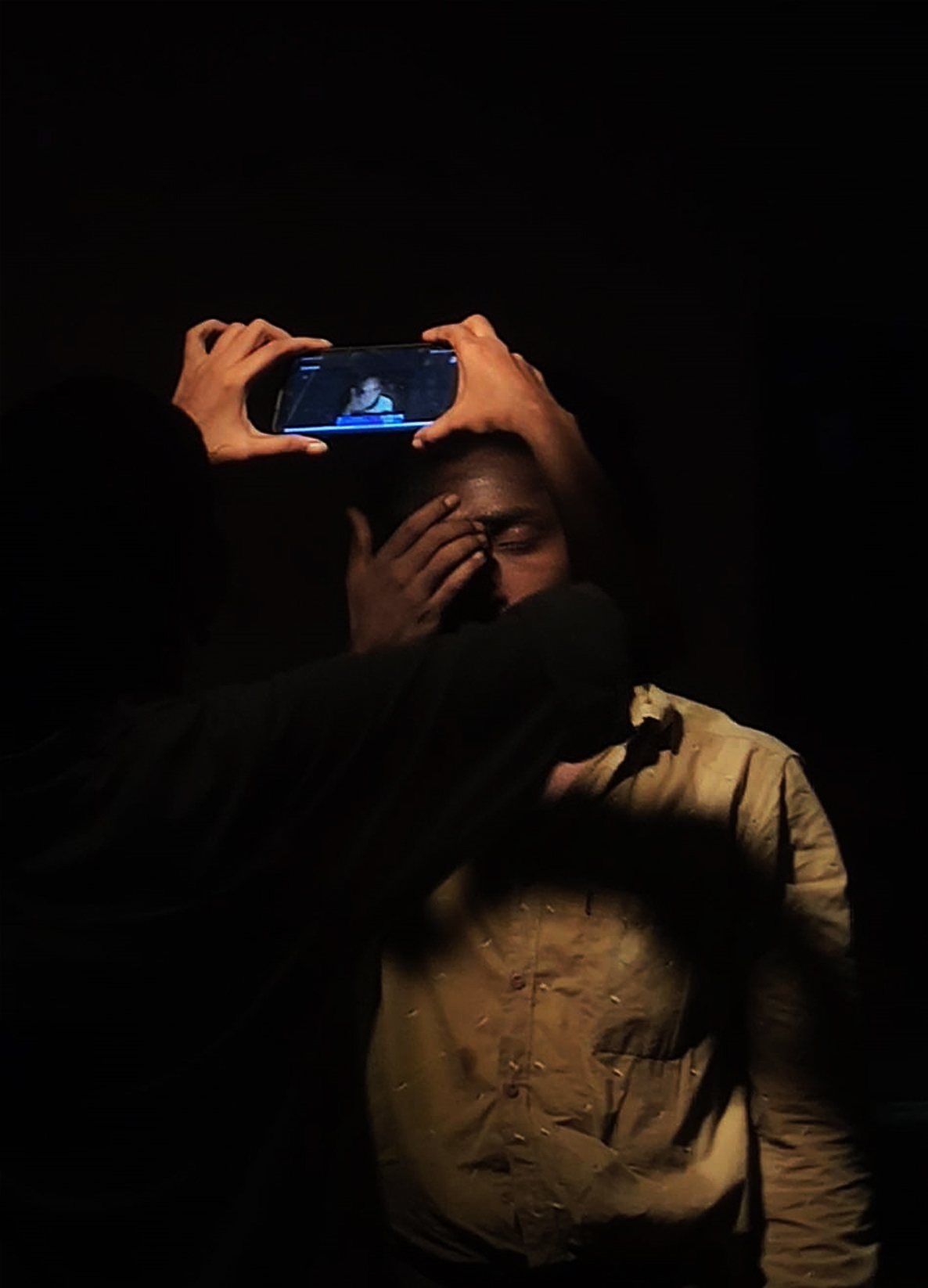
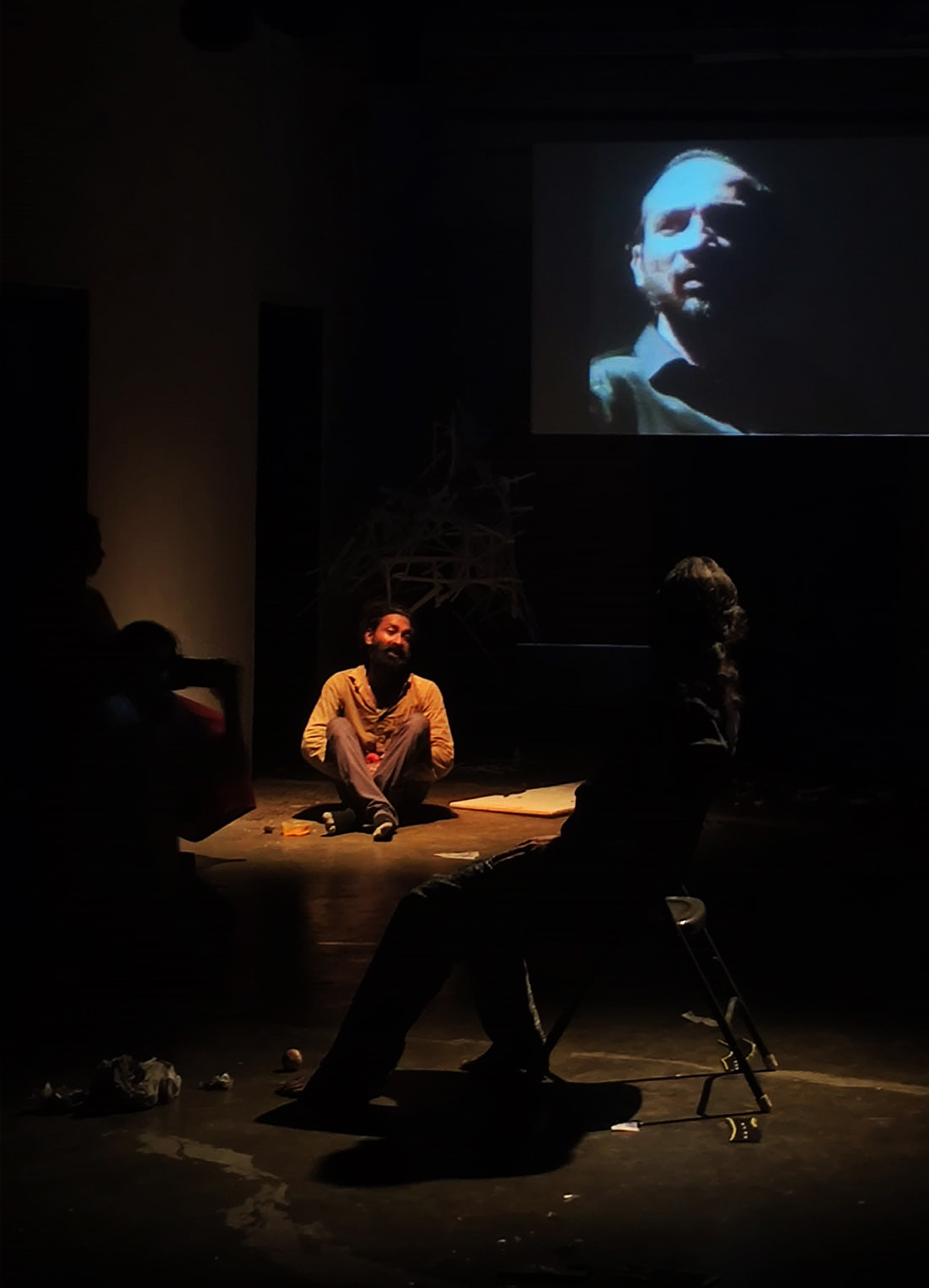
© Merkaba
For whom does the camera blink?
Wait! Apart from you and me, there is a third one among us. It keeps watching us and shows others what we are onto. A familiar face indeed. Often, you and I enjoy toying with this partner-in-crime. Vietnam, Chernobyl, 9/11, Bhopal, Gujarat, Syria, Afghanistan, Ukraine… A long list indeed. All this time, we have been spectators or TV consumers. Now that the tragedy has hit home, spectators have turned into witnesses or victims, or even the perpetrators themselves. Aimlessly moving around, the camera is watching every move we make. It is alive and telecasting to eager spectators sitting in the comfort of their couches. The spectacle does inject a little dose of conscience into them. A momentary chill down the spine. Probably, it will be different if the spectator is present near the stage. In an unfortunate scenario, if you happen to be around when this spectacle unfolds, will you interfere to prevent it, or keep your eyes wide shut, or take out your swanky phone camera? The silence of the witnesses scares me; probably each one of them is equally frightened as I am. Members of a surveillance society, we pretend to know nothing of the men who raised their knives and sticks on a poor fellow. One more tragic death adorns news headlines for a couple of days, then it vanishes into the abyss of our forgetfulness. The mob becomes unidentifiable and the witnesses go into hiding.
It is not a secret that we – you and I again — have a thing for instant delivery of justice. Summary trials and instant executions have been part of our civilizational curriculum. History may credit one Captain William Lynch, a self-appointed judge in 18th century America, for stamping his name on mob executions, but we have been doing it under various synonyms in our own backyard for centuries. No prize for guessing that most lynching victims across the world are ethno-religious minorities. Lynch himself had a liking to see African-Americans hanging from instantly-erected poles. Here, we even had caste-based codes for summary trials. Even though politics and violence – two indistinguishable siblings craving for the same pie – appear in various avatars, lynching stands out for being loud and mute at the same time. Staged in full public view, it silences the helpless cries of victims with the numbness of frightened witnesses.
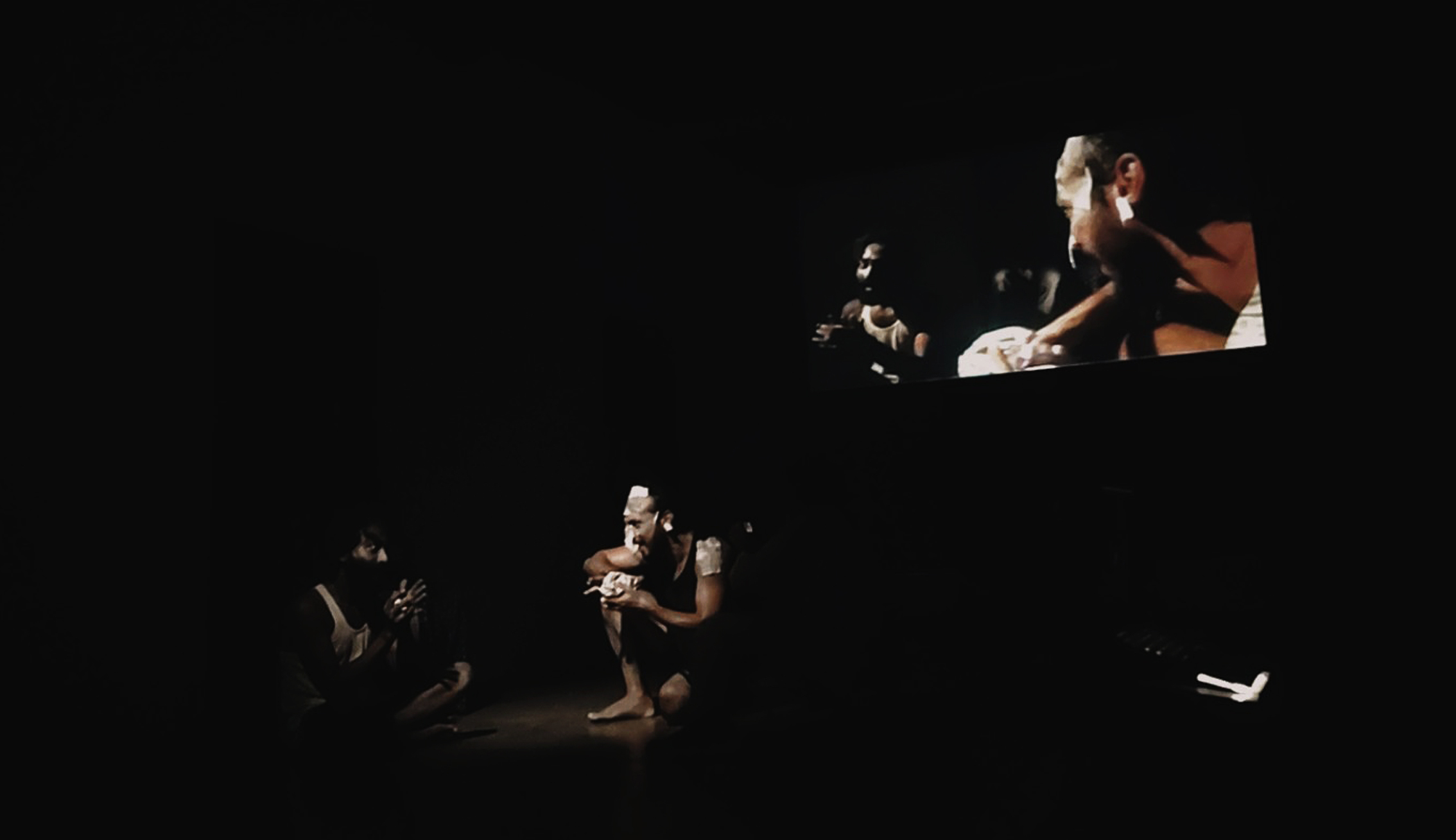
© Kenshin
Flesh is the weapon, body is the target
Listen keenly, you can’t help but notice a feeble voice in the background. It gets clearer gradually. A chant — ‘It was only mutton’ — reverberates the air. All of a sudden, memories go on a trip, back to 2015. You will see a stage. Once again, the mob is hungry. A fifty-two-year-old man is begging for his life. What is his ‘crime? The mob arranges a feast because it suspects him of storing beef at his home. Forensic tests later declare that the ‘beef’ sample collected from the ‘scene of the crime’ by police is indeed mutton. Stung by a momentary jolt of conscience, newspapers and TVs loudmouth: ‘It was only mutton.’ Does it sound as if they feel pity towards the dead man because he was caught with the wrong kind of flesh? The irony can’t be crueller. In a land which constantly shares dais with countries where hunger and malnutrition are prevalent, the choice of food has turned into a political weapon. This is an invitation for all of us, to partake in the ‘veg vs non-veg’ debate. In public forums, universities, restaurants, streets…Who cares what the mob really relishes! Sometimes an adjective is adequate to make things sound holy. The Railways caters satvik food in a few trains running to pilgrim centres. The menu lists Purani Dilli Vegetable Biriyani among others. The non-vegetarian ancestor of this chap has been a favourite of right-wing politicians for its metaphorical use. Put an adjective in front, and the problem is solved. The dichotomy that plays out here is as plain as blank paper. Holy cow versus unholy citizen, helpless individual versus armed mob, Constitution versus non-intervening law enforcement, civil society versus numb witnesses…
When the feast is finally over, I feel something has been forced down through my throat. Wandering around this small stage one last time, we — the head and tail, you and me, the two-faced monster — come face to face again. Having only expected the role of spectators of the feast, we look at each other as shaken witnesses, whose testimony may mean nothing to the grand jury. Were we not provoked already? Were we not converted already? There is a grandstand outside, where the preaching from this corner stage may sound deafening to many.
Postscript
In the dictionary of science, uncertainty and disorder are represented by the term ‘entropy’. This Greek word, which originally meant ‘transformation’, attained its current scientific connotation in the 19th century. The law of entropy, better known as the second law of thermodynamics, states that every irreversible physical process leads to an overall increase in the entropy of the universe.
Entropy — a performance inspired from fear, on peace — was organised at Forplay Society, Mattanchery on October 29 and 30. Rather than representing a single concept, Entropy develops in each spectator differently depending on their association with their surroundings. As a transdisciplinary work of art, it fuses theatre and film, which complement each other throughout the performance.
Directed by: Firos Khan
Performers: Fawas Ameer Hamsa, Hussain Samad
Filmmaker: Lavanya Ramaiah
Dramaturge: Dr Malavika Rao
Archivist: Kenshin
Music: Seljuk Rustum
Stage manager: Ansuman R
#The author would like to thank Kenshin and Seljuk Rustum for their valuable inputs

Joyel K Pious is a freelance writer and photographer. Belonging to Thrissur district of Kerala, he is interested in the interwoven relationship of humans among themselves and with nature. He also extends his services as News Editor, PhotoMail.
Published on November 20, 2022
Share
Related Articles
A Sense of Dislocation
Indian photography hasn’t seen many such explorations that interact and intersect with other media such as light art. But this has started to change in the last couple of years, with a few photographers trying to do light painting; and it is in this context that Joyel K Pious and Gaurav Rachamalla’s collaborative photo project becomes striking. Although this style is popular in the west, this collaborative project stands tall and distinctive amidst the usual Indian street and documentary photographs. It probes the philosophical underpinnings that are intrinsic to the medium itself as well as pose several questions related to urbanisation.
On Ajith Nedumangad’s Photographs
It is the sheer absurdity of the sculptures created and photographed by Ajith that hits the viewer right from the off – juxtapositions (reminiscent of the Dadaists and Surrealists) in which materials and the forms they are used to create are often in conflict with each other and, at other times, are self-referential in a darkly humorous manner.
On Photography, Remembering Susan Sontag
On Susan Sontag, a poem by famous Malayalam-English poet N Ravi Shankar


